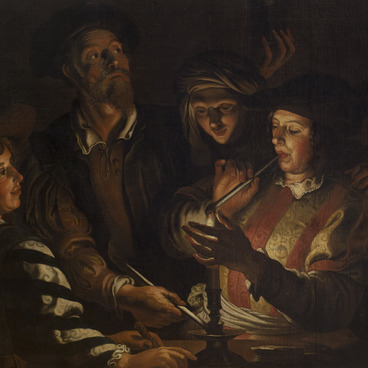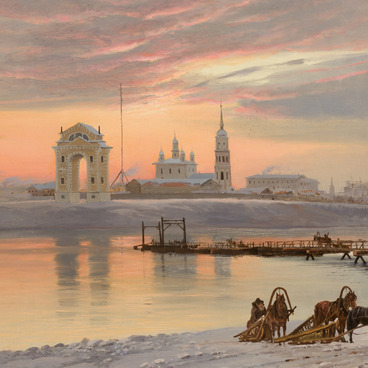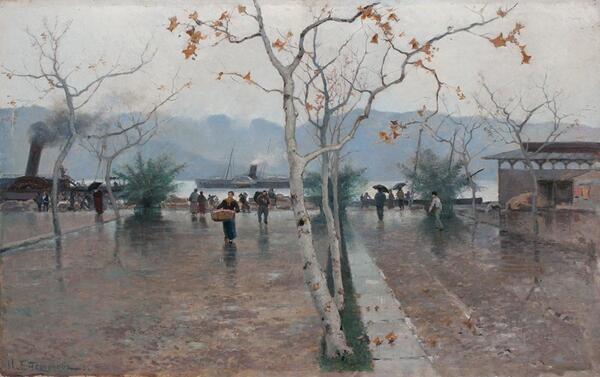Ivan Endogurov was born into the family of a rear admiral of the Russian Imperial Navy in Kronstadt. When he was ten, his father died and his mother took care of the children — Ivan and his two siblings. The boy’s artistic talent showed during the years at the gymnasium. Later, while studying at the Faculty of Law of St. Petersburg University, Endogurov attended classes of the landscape painter Efim Volkov, and in 1884 he entered the Imperial Academy of Arts as a non-matriculated student. Soon Endogurov proved to be a mature artist — at the academic exhibition in 1885, he earned a silver medal for his paintings “Backyards”, “Birch Grove” and “Early Spring”.
In 1890, the artist left the Academy of Arts and began working independently. He was equally full of enthusiasm when painting the scenery of Central Russia, as well as the landscapes of Ukraine and Crimea. He became famous in Munich and Paris, where he received a silver medal at the World Exhibition. Ivan Endogurov entered the history of the Russian art as a master of lyrical landscape. The painter’s younger brother Sergey also became an artist and exhibited his works since 1889 as a member of the Society of Russian Watercolorists.
‘Cape Fiolent. The Rock of St. George’, which Ivan Endogurov painted in the 1880s, belongs to his best works. The Crimean Black Sea coast was a favorite place for Russian landscape painters. When portraying the scenery, the artists often used compositional and pictorial stereotypes, not always relying directly on nature. However, Endogurov managed to avoid the cliché. He chose to depict a fleeting moment in the state of nature and created a painting with an unusual color palette.
In 1890, the artist left the Academy of Arts and began working independently. He was equally full of enthusiasm when painting the scenery of Central Russia, as well as the landscapes of Ukraine and Crimea. He became famous in Munich and Paris, where he received a silver medal at the World Exhibition. Ivan Endogurov entered the history of the Russian art as a master of lyrical landscape. The painter’s younger brother Sergey also became an artist and exhibited his works since 1889 as a member of the Society of Russian Watercolorists.
‘Cape Fiolent. The Rock of St. George’, which Ivan Endogurov painted in the 1880s, belongs to his best works. The Crimean Black Sea coast was a favorite place for Russian landscape painters. When portraying the scenery, the artists often used compositional and pictorial stereotypes, not always relying directly on nature. However, Endogurov managed to avoid the cliché. He chose to depict a fleeting moment in the state of nature and created a painting with an unusual color palette.
When depicting the sea, the artist developed a complex color harmony that enhances the vividness of the scenery. The finest nuances of blue, pearl, and emerald hues convey the changing colors of the southern sea. The picture turned out to be filled with air and light. The name of the ancient cape ‘Fiolent’ can be translated as ‘God’s country’ and the artist seemed to capture one of its meanings.
In the second half of the 19th century “Cape Fiolent. St. George Monastery” was bought by the Irkutsk collector Vladimir Sukachev. In 1920, together with his collection, the painting was donated to the museum along with other artworks from Sukachev’s collection.
In the second half of the 19th century “Cape Fiolent. St. George Monastery” was bought by the Irkutsk collector Vladimir Sukachev. In 1920, together with his collection, the painting was donated to the museum along with other artworks from Sukachev’s collection.





